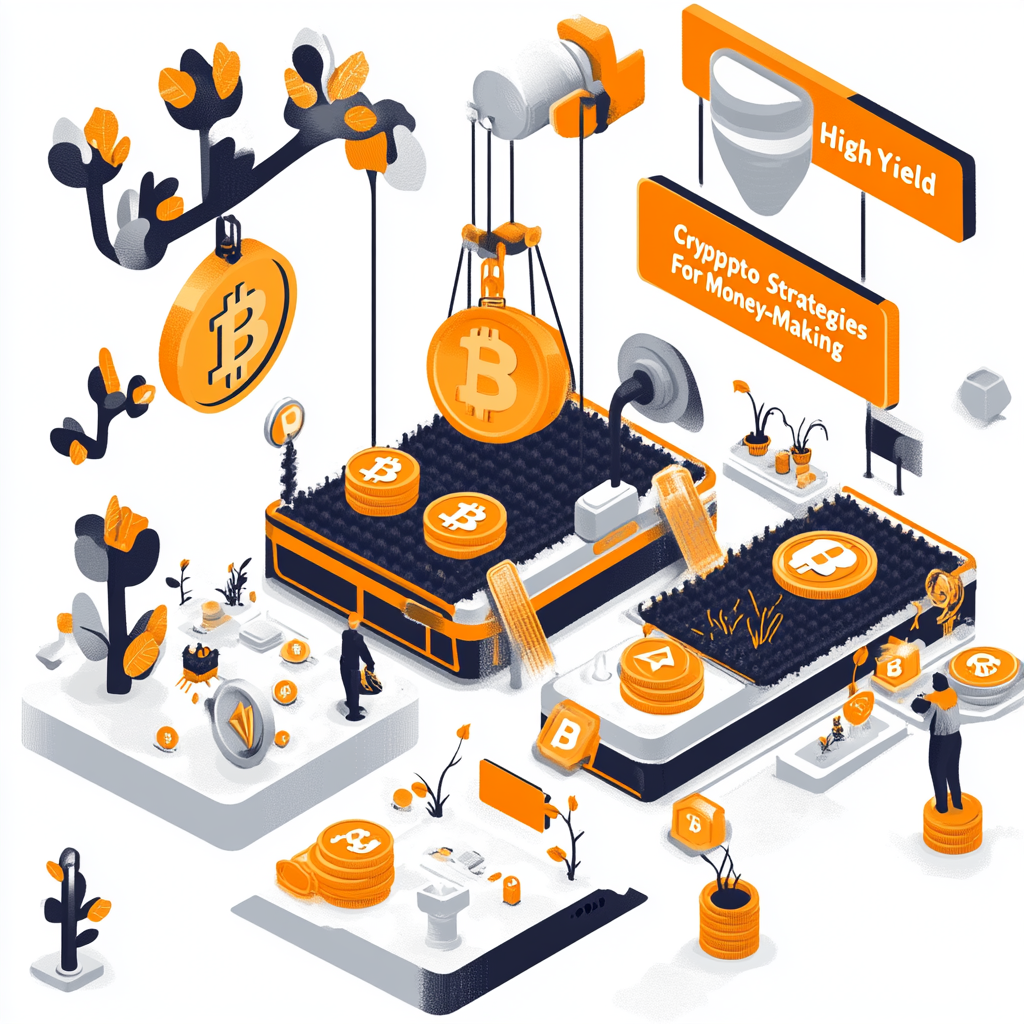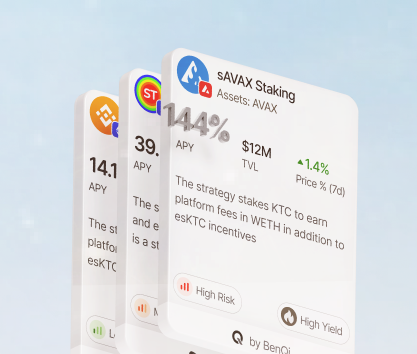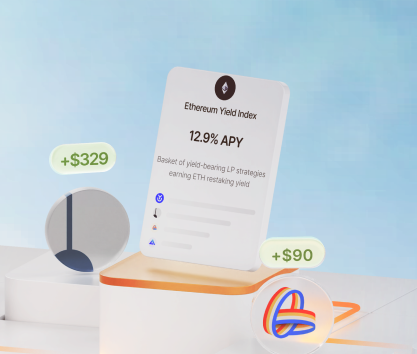Investors who decided to move some of their holdings to Tokan Exchange on the Scroll network are feeling quite smart since they are enjoying over 68% APY in TKN rewards for staking USDC and CHI. The native TKN token can be immediately swapped for a wide range of different digital assets including stablecoins like USDC (the rate is 1TKN = 0.029 USDC) or ETH (1 TKN = 0.0000109 ETH). Tokan is offering a wide range of liquidity pools with TVL higher than $1 million.
It is a great destination for users interested in yield farming since all pools are paying in TKN tokens and some are quite profitable. For example, investing in the TKN-CHI pool yields over 122% with a 30-day average of 114%. Since such cases of incredibly high returns seem to be common in the DeFi landscape, the slow adoption rate may appear surprising. However, the sector is not as safe and reliable as many crypto enthusiasts thought it was.
Let’s talk about some of the best high yield farming protocols and pools that they offer. We will also discuss the risks associated with this particular approach to capital allocation in the sector. Contemporary investors must be ready to face a wide range of challenges when exploring the world of decentralized finance.
High yield crypto farming risks and limitations
The on-chain analytics platform Dune reports that the number of unique wallet addresses in the DeFi sector grew by 230% in 2024 compared to the last year with the cumulative number reaching 86 million. The number of monthly active wallets also increased by 310% and reached 16.1 million in September 2024. The dynamic seems quite healthy. However, the number of actual users is speculated to be magnitudes lower. This notion is supported by the falling combined TVL.
Many crypto investors and enthusiasts are feeling nervous about the DeFi ecosystem as some issues and risks remain very concerning leading to slow adoption rates.
Below are some of the risks that you should be aware of if you are interested in high-yield investment options in decentralized finance:
- Technological risks related to smart contracts. The security of these tiny programs that allow protocols to automate transactions and build unique platforms is still a big issue in the industry. Different sources report that bridges enabling cross-chain transactions have lost from $1 to $3 billion in 2022 alone due to hacker attacks exploiting smart contract vulnerabilities. The issue is pressing. MakerDAO is ready to pay up to $10 million to people who can find critical vulnerabilities in their smart contracts.
- Low liquidity and utilization have the potential to cause massive losses and significantly reduce the ability of investors to exit positions in time or secure high profits. Since adoption rates vary greatly and some protocols simply do not have a large enough user base to ensure high utilization, it is possible that pools will generate significantly fewer gains than expected. It is important to work with protocols like Aerodrome which have high TVL liquidity pools. For instance, investing in the OVN-USD+ pool will yield up to 86% in AERO rewards.
- Market volatility and unpredictable profitability. Impermanent loss can be a frustrating issue for many investors as price fluctuations can lead to massive losses that quickly turn into real losses if investors cannot exit positions when and if prices recover. Up to 50% of UniSwap liquidity providers lose money due to price volatility. At the same time, floating APYs that change depending on market circumstances, utilization, and other factors make it hard to estimate profits. For example, the WETH-WTAO pool on Gamma promises up to 32% base APY and 114% in GRAIL rewards but the 30-day average in September 2024 was just 14.02%.
Regulation and compliance. The DeFi sector is severely under-regulated which can be an advantage to some users but a huge problem for others. Consumer protection simply does not exist in the self-custody world of decentralized finance where the responsibility to take care of holdings and their safety falls fully on the shoulders of investors. With over $800 million in losses suffered by users due to hacks in 2024, the lack of consumer protection outside of insurance is a huge red flag for many investors.
Contemporary investors have access to a wide range of different instruments for effective yield farming. The DeFi sector is still young but it is maturing at an impressive pace. Each year, novel investment options appear in the market and allow crypto enthusiasts to engage in all sorts of strategies. Let’s talk about some useful tools that all investors should use to achieve consistency and enjoy high ROI.
- DeFi trackers like De.fi and DeFiLlama help investors navigate the overwhelmingly complicated landscape of decentralized finance and search for the best options if they need to par capital. These platforms allow users to receive all the relevant on-chain information and analyze various yield farming protocols and their pools without losing track of the bigger picture. For instance, DeFiLlama tracks over 11 thousand pools across 92 chains and several thousand protocols.
- Portfolio trackers are Incredibly important tools in the DeFi sector where investors often have to deal with hundreds of positions. In the US, Canada, EU, and many other regions, taxation frameworks already cover gains and losses in the crypto market making it critical to report your financial operations to authorities like the IRS. Many modern portfolio trackers either offer reporting features or partner with different companies that specialize in taxes.
- Yield aggregators, auto-compounding platforms, and specialized providers are also useful to many investors who may not have experienced the DeFi sector personally. For example, you can go to Rivo.xyz and invest in DeFi indexes instead of searching for the right separate pool. Investing in the DeFi core index focused on altcoins yields 12.7% APY which is much higher than many tradfi investment options like US treasury bonds yielding 4.11% APR in 2024.
All these tools can positively affect the outcome of your investment activities if you are willing to learn how they work and what kind of advantage they provide to users. We strongly recommend using all available analytical and utilitarian tools at your disposal to improve yields and seek the best investment opportunities.
Excellent yield farming protocols to choose in 2024
The current landscape of the DeFi sector is diverse enough to allow investors to build incredibly complex portfolios and utilize a variety of risk management techniques like hedging without leaving the ecosystem. Since we are focusing on yield farming strategies that produce high rewards, we will give you a couple of interesting options that you should check out.
- Pendle is an Ethereum-based protocol with time-sensitive pools that have a predefined expiration date. Depending on market conditions and utilization, these pools can be incredibly profitable. The PENDLE token has a $731 million market cap and performs quite well gaining 612% since the beginning of 2024. Pendle has several good pools offering rewards. For example, the perpetual EETH pool has a 3.04% APY and 2.54% PENDLE rewards.
- PanCakeSwap is the premiere DEX on Binance Smart Chain. The protocol offers quick and cheap swaps while maintaining some of the most profitable liquidity pools in the sector. Investors hunting for lucrative rewards may take a closer look at the WETH-USDT pool that offers a 10.9% base APY and 9.36% in CAKE rewards. The TVL of the pool is close to $17.5 million. The Cake token is one of the best gainers in 2024 with a 92% growth since January 2024.
- Aerodrome on Base is a good choice for investors looking for high-yield opportunities outside of mainstream chains like Ethereum. The AERO token has been doing great in 2024 gaining 1,282% in 2024. It is a younger DeFi protocol that wants to grow its user base as quickly as possible which is possible on Base only with incredibly generous interest rates. Putting assets into the WETH-KLIMA pool (over $12 million TVL) yields up to 304% AERO rewards APY.
- Convex Finance operating on the base of Curve DEX is known for its versatile lineup of pools offering generous rewards in CRV/CVX tokens which have some of the highest trading volumes in the crypto market. Investing in the CRV-CVXCRV pool on this protocol yields 0.6% base APY and 9.74% in CRV rewards. 30-day averages regularly outperform expectations. For example, the September average was 12.43%. CRV tokens lost 38.4% in 2024 but have strong trading volumes.
These protocols stand out thanks to their high TVLs. For example, PanCakeSwap has a massive TVL of over $1.79 billion. Higher total value locked figures usually indicate that the community is supportive of the project and that you can expect good utilization and liquidity metrics.
The best cryptocurrencies for high yield crypto farming
It is important to pick appropriate targets for HY farming strategies. In many cases, you will see high interest rates in pools that are focused on stablecoin pairs, wrapped and staked mainstream coins like WBTC, WETH, stETH, sDAI, and so on. Using the right combination of assets is hugely important for the long-term success of your investment activities in the DeFi sector.
Many investors like the idea of using stablecoins since they are inherently stable and do not expose you to impermanent loss risks to the same degree as speculative crypto assets. With all of the above in mind, let’s discuss some tokens that seem to be working better as targets for yield farming strategies with high interest rates.
- ETH and its wrapped or staked versions are incredibly popular allowing many protocols to offer pools with high APYs and utilization. Wrapped versions of the tokens can be used on a variety of successful protocols across all chains in the Ethereum ecosystem and even outside of it. For example, you can invest WETH on Aave for 2% APY on top of interest accrued through staking. The WETH pool on Across offers 2.68% base APY and 2.16% in ACX rewards. You can stake ETH and its derivatives on a wide range of protocols including Curve, Pendle, Uniswap, Convex Finance, Yearn Finance, and many others.
- USDC is the most popular stablecoin in the DeFi sector. While USDT is still bigger thanks to high volumes of CeFi trading and the first mover advantage, USDC is gaining ground in decentralized finance with hundreds of protocols offering USDC-based two-sided and single pools. A good example is the PanCakeSwap’s USDC-USDT pool which has a 0.43% base APY, 4.47% in CAKE rewards, and an impressive TVL of $22.3 million. USDC can be invested in a large number of protocols on over 30 chains.
- iis the layer-1 token of The Open Network. Recently, two DEXes (DeDust and Ston.fi) on the TON chain have been offering generous rewards attracting over $176 million and $197 million respectively. Investing in TON-USDT pools on these protocols yields 16.3% in TON rewards. This token has been doing quite well in 2024 gaining roughly 180% since January. Among trending projects, DeDust and Ston.fi stand out thanks to their high TVLs and good performance of the TON token.
Among honorable mentions, we should put the spotlight on Bitcoin, CRV tokens, USDT, and DAI as these tokens can be invested in hundreds of pools across the DeFi sector.
Should you invest in high yield farming crypto projects?
The future of the DeFi sector is uncertain due to the absence of solid data on user activity, fluctuating TVL figures across the board, and the prevalence of untested investment instruments. Nevertheless, blockchain technology keeps penetrating various markets establishing the necessary foundation for the long-term development of valuable financial products.
It may not be the brightest idea to concentrate capital on high-yield farming options, but having a couple of moderate positions should add the necessary flexibility to a portfolio.
Be mindful of potential risks, choose protocols with good returns in tokens that have high trading volumes and investor interest, and make sure to use risk management techniques to reduce danger to the portfolio.









